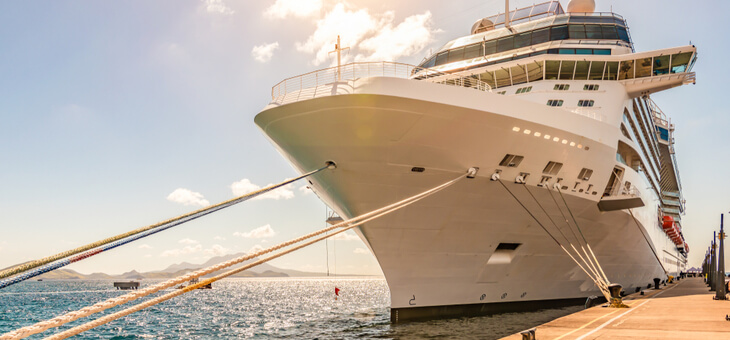Cruising officially returns to Australia on 17 April, but that in no way means the industry will be back on track straight away.
Federal health minister Greg Hunt announced last month that the ban would come to an end on the basis of health advice.
However, it’s not just a matter of giving the green light and the industry resumes.
For a start, there are hardly any ships in the area as they are servicing the Northern Hemisphere season – Australia’s cruising season begins in October – and secondly these massive cruisers require a tremendous amount of support in the form of food and beverages and workers. Reactivating their supply chains is going to take considerable effort.
Read: How do I get more out of my cruising experience?
So, while some ships will begin cruising next month, it could be six months before the industry gets back up to speed.
Cruise Lines International Association managing director Australasia Joel Katz welcomed the decision and said the resumption of sailing was going to be a boon for the tourism industry.
“The announcement is a huge breakthrough for more than 18,000 Australians who depend on cruise tourism, including travel agents, food providers, port workers and other industry suppliers,” Mr Katz said.
However, he said there was still much preparation to complete before cruise ships could return to Australia.
So, what does it take to keep a cruise ship supplied? The figures are astonishing.
Read: A brief history of cruising
Symphony of the Seas, one of the world’s largest cruising ships, feeds about 6600 passengers and 2200 crew and on a typical seven-day itinerary uses 60,000 eggs 4400kg of chicken, nine tonnes of potatoes, 300kg of ice cream and 450 cases of champagne.
Symphony of the Seas does not sail in Australia, but for something a bit closer to home, a Celebrity Cruise ship based in Sydney will typically order each season 58,000 bottles of wine, more than 170,000 bottles of beer, 20 tonnes of pineapple, 23 tonnes of tomatoes, 46 tonnes of potatoes, 37,600 eggs and 118,900 bags of flour.
The line also contracts 26 loadings of food and beverages across Australia and New Zealand to ensure the food is fresh and seasonal.
P&O told cruise review site cruisecritic.com.au that in Australia the group will buy 500 tonnes of beef, 600 tonnes of chicken and 200 tonnes of bacon. It also goes through 20 tonnes of espresso coffee, which is astounding when only 10g of coffee is needed for an espresso.
Australian lamb is supplied across the group.
And then there is serving all that food up and keeping a cruiser ‘shipshape’.
Read: Your guide to cruising European waterways and canals
A Cunard spokesperson told Conde Nast Traveller that daily servicing the Queen Mary 2 was a massive task.
“It’s like checking out the entire Plaza Hotel in New York after breakfast, having the entire kitchen restocked during the morning, changing every bed linen and towel, checking back in the entire hotel during the afternoon and holding a state banquet every evening.”
Loading all those supplies is another test. Due to their short docking time, it’s a logistical challenge to load all that food in the short window the ships are at port. Workers often only have a matter of hours to resupply a whole ship.
While international cruise ships have federal approval, they will still need to meet all state and territory public health requirements.
If you enjoy our content, don’t keep it to yourself. Share our free eNews with your friends and encourage them to sign up.

